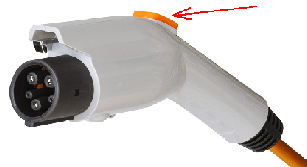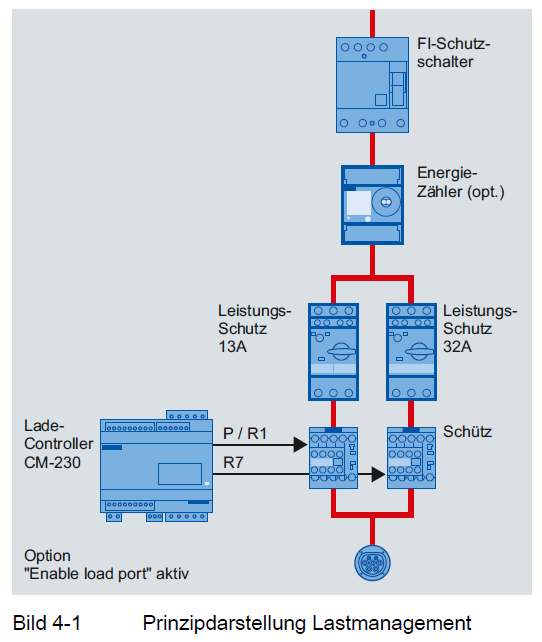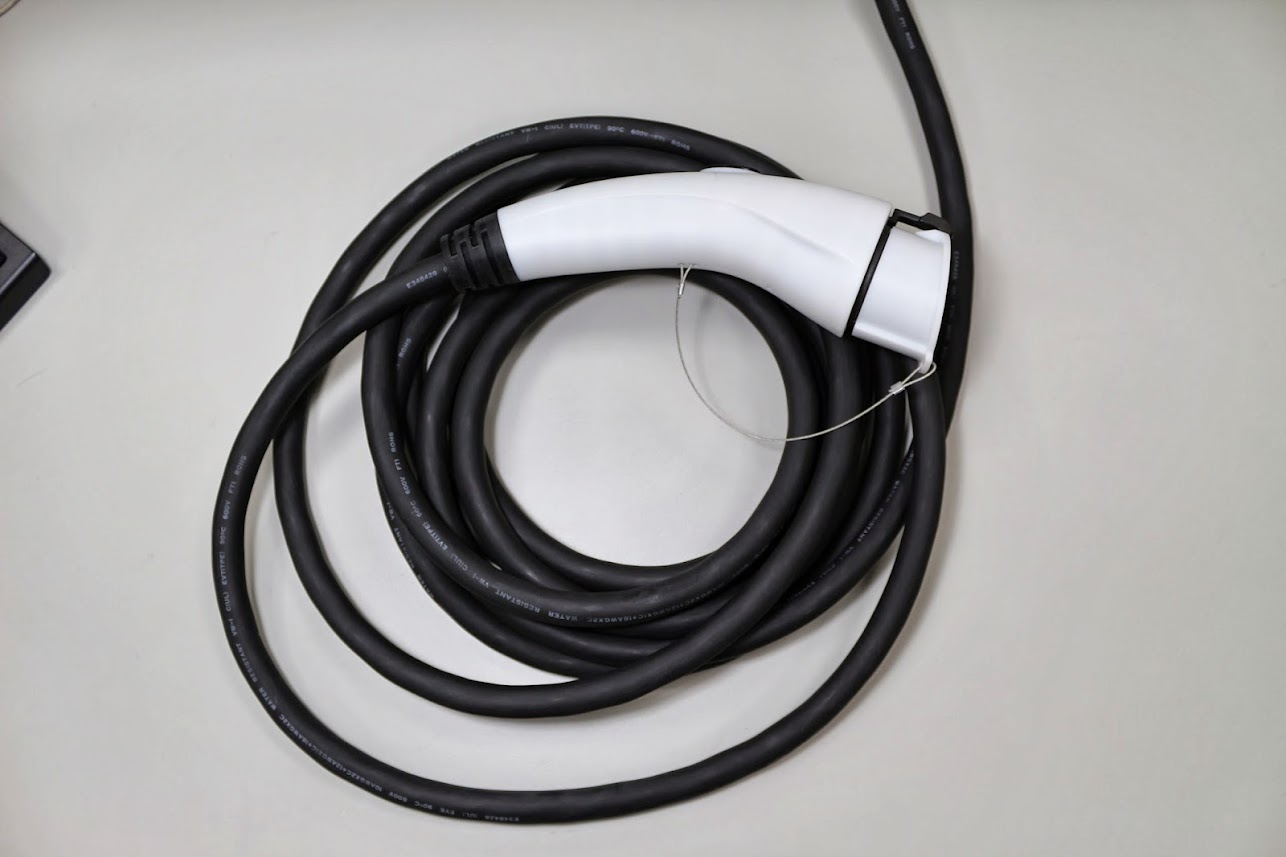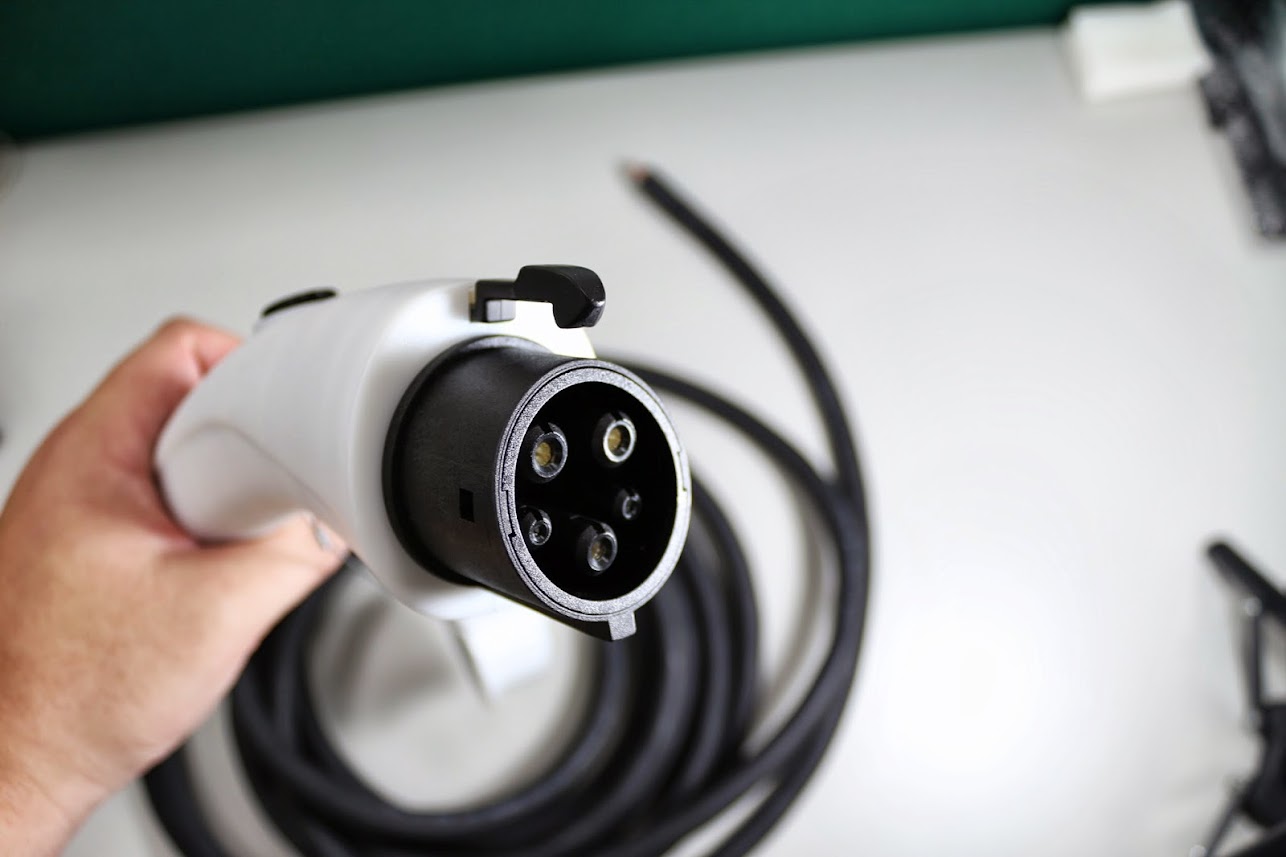Good evening. I want to make a resume of J1772-2010 and 62196/61851, please correct me if I'm wrong.
The Control Pilot circuit is the same for J1772-2010 and 61851. The difference is the Proximity part.
J1772
J1772 uses a Type 1 Cable, R6, R7 & S3 are intern in the J1772 plug/cable, R4 & R5 are in the vehicle (inlet). The EVSE outlet has a Pin for PP, which is normally not used. (?) The proximity part has 3 different states - Not connected, Button (S3) pressed & connected. This Button -S3 is the one marked on the following image: (?)

This cable has no resistor that could be measured between PP & PE (like the Type 2 Mennekes cables) to define the cable's max. current. (?)
61851
This one uses a Type 2 cable or Mennekes-cable. There is a resistor between PP&PE, but not the resistances R4-R7 &S3 (like the J1772 cable). Here you can't push a button, so the EV changes it's state, but the EVSE-controller can "detect the maximum current carrying capacity of the connected charging cable. The charging output is only activated if the current carrying capacity of the charging cable is greater than or equal to the maximum charging current that is coded in the pilot signal." - Siemens.
- So if you want to use a Type2 cable, you have to make a part in the Open EVSE Code to measure the resistance from PE-PP.
PS:

This cable from Mennekes uses both 61851 and J1772-2010, on the left side you have a resistance of 680 Ohms between PP&PE, and on the right side, you have R6,R7 & S3 in the cable (R4&R5 are then logically in the EV) - the cable's max. current can be measured and you can press the Button -S3 to force the EV to change it's state.
Thank you for reading it, if you found something wrong, please let me know!
Greetings Chris.
The Control Pilot circuit is the same for J1772-2010 and 61851. The difference is the Proximity part.
J1772
J1772 uses a Type 1 Cable, R6, R7 & S3 are intern in the J1772 plug/cable, R4 & R5 are in the vehicle (inlet). The EVSE outlet has a Pin for PP, which is normally not used. (?) The proximity part has 3 different states - Not connected, Button (S3) pressed & connected. This Button -S3 is the one marked on the following image: (?)

This cable has no resistor that could be measured between PP & PE (like the Type 2 Mennekes cables) to define the cable's max. current. (?)
61851
This one uses a Type 2 cable or Mennekes-cable. There is a resistor between PP&PE, but not the resistances R4-R7 &S3 (like the J1772 cable). Here you can't push a button, so the EV changes it's state, but the EVSE-controller can "detect the maximum current carrying capacity of the connected charging cable. The charging output is only activated if the current carrying capacity of the charging cable is greater than or equal to the maximum charging current that is coded in the pilot signal." - Siemens.
- So if you want to use a Type2 cable, you have to make a part in the Open EVSE Code to measure the resistance from PE-PP.
PS:

This cable from Mennekes uses both 61851 and J1772-2010, on the left side you have a resistance of 680 Ohms between PP&PE, and on the right side, you have R6,R7 & S3 in the cable (R4&R5 are then logically in the EV) - the cable's max. current can be measured and you can press the Button -S3 to force the EV to change it's state.
Thank you for reading it, if you found something wrong, please let me know!
Greetings Chris.







